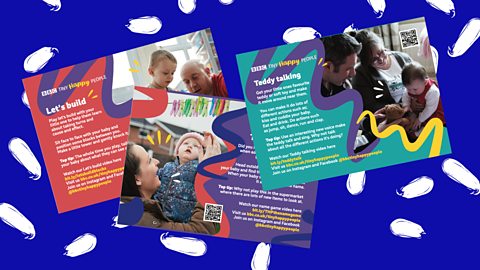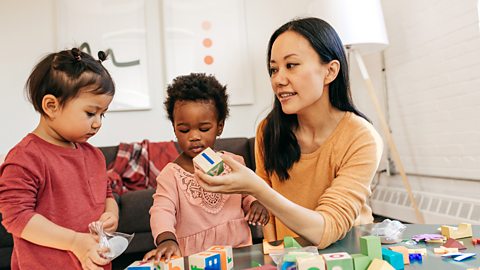≥…»ÀøÏ ÷ Tiny Happy People is a website for parents of children aged 0-4, which aims to help the millions of children across the UK that are starting school behind with their language skills. We do this by empowering parents to understand their role in children‚Äôs development and encouraging them to carry out language activities in the home learning environment.
As such, we’re looking to introduce key behaviours to families that are beneficial for children’s language learning, demonstrate how they can be built into their daily lives and repeated often enough to have a positive impact. Our approach is underpinned by a behaviour change model known as COM-B, which is used in healthcare interventions around the world.
To better understand the COM-B model and how it applies to Tiny Happy People, we spoke to psychologist Dr George Kitsaras, a specialist in Behaviour Science at The University of Manchester.
What is a behaviour change model?
“A behaviour change model is any kind of theory or framework that tries to break down behaviours into different components, to help us to understand how individuals or groups change towards a beneficial behaviour and sustain that behaviour over a period of time,” says George.
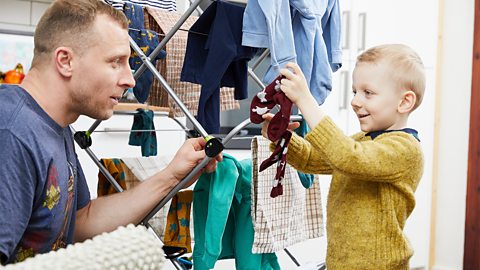
Why is behaviour change more important than simple awareness raising?
“Awareness raising is part of behaviour change,” says George. “We used to think that telling people what to do and giving them some resources would be enough to trigger changes in behaviour. The idea was ‘If I tell you how to act, you can go and do it’, but then we didn’t understand when people didn’t act. Human behaviour is a little more complicated than that.
“It’s ok to give people information, but if they don't have the tools to use the information, the motivation to engage with the information and the opportunity in their day-to-day lives to behave a certain way, then they won't do it.” George explains. It’s not so much that people don’t understand that there’s a need to change their behaviour says George, but that they won’t be able to because of other factors affecting their ability to make the change.
The other problem with awareness raising alone is that it puts too much emphasis on the individual, says George. “It’s saying, ‘Well, if I give you all of the information, you should go and do something about it’. Therefore, if someone fails to do that thing, they will then feel bad about themselves for not doing what they should.”
Modern approaches to behaviour change take a more collaborative approach, taking into account the various barriers to action that may be present in people’s lives. “We offer them a combination of tools depending on their circumstances to then help them to actually take the next step, to change their behaviour and sustain those changes over time.”

What is the specific behaviour change model for Tiny Happy People?
George has been working with Tiny Happy People to look at how we apply the COM-B model of behaviour change to our approach.
“COM-B is a well-known model within behaviour change,” he says. “It encompasses three main elements: Capability, Opportunity and Motivation. It says that those three elements are crucial for any given behaviour.”
Tiny Happy People aims to support parents with those three components.
Capability
- Capability refers to a person’s knowledge, skills and ability to carry out a behaviour
We support parents’ capability to conduct our activities by making them accessible to all parents. They use no specialist equipment, require little skill, and are clearly demonstrated through films modelling best practice. We endeavour be representative of our diverse audience so that parents can envisage themselves carrying out activities as they see people like them doing so. We have clear, key messages about the behaviours we’re looking to see, as exemplified by our Tools for Talking films.
Opportunity
- Opportunity refers to the external circumstances required for a person to be able to carry out a behaviour
We look to offer parents a host of opportunities to engage in language development activities with their children. We present a wide range of activities that can be carried out in a variety of circumstances and settings, both at home and on the go and as part of daily routines.
Motivation
- Motivation refers to a person’s desire to carry out a behaviour
We motivate parents through providing them with the reasons why they should be concerned with language development and explaining how simple, fun activities with their children are of huge benefit. Our explanations of child development science in films like our Speech Lab series are clear and relatable to parents.
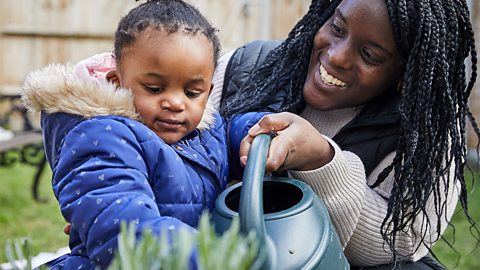
What evidence is there to support the COM-B model?
“COM-B has been used extensively in healthcare initiatives,’ says George. “And then it moved to being used in other areas related to human behaviour, from transportation and things like engaging people with cycle to work schemes, to reducing energy consumption. So it has really flourished to become a go-to model for any given behaviour change. All the evidence is that the COM-B model works well in predicting changes to given behaviours.”
Is COM-B used universally across the UK?
COM-B was developed at University College London in 2012 and has been widely applied across the UK and internationally. “NHS Scotland has taken the COM-B as a basis and reformulated it into its own framework called MAP, standing for Motivation, Action, Prompt, which is very similar,” says George. “COM-B could encompass prompts as one of the techniques used to build opportunity and motivation.” As such, we see COM-B as a model that is appropriate across all four nations of the UK.
How does COM-B work in practice with Tiny Happy People?
COM-B, like any theory, has its limitations. “Where it can be less robust is in explaining how long a behaviour can be sustained. You need to undertake a piece of research that lasts years, but research projects tend to be shorter pieces of work,” says George.
To look at the impact of Tiny Happy People over time, we are currently undertaking an evaluation project with the University of Sheffield. As part of the study, families are actively consuming Tiny Happy People content over the course of their child’s first two years of life, in which time researchers are looking at the effect this has on both parental confidence and children’s expressive vocabulary. The full results will be published in due course, but the interim results after 12 months are looking very positive, with parents consuming our content being more likely to engage in a responsive and developmentally appropriate way to their child’s communication attempts. The intervention has been more impactful among parents without a degree or equivalent level qualification, which is encouraging, given that language delay is more prevalent in lower-socioeconomic groups.
“I think with Tiny Happy People, COM-B is a lot more robust as an approach,” states George. “As children grow, circumstances change within families and parents and carers will always be on the lookout for new things to do - it’s not that we're asking them to do the same behaviour from zero to five years. So in essence COM-B model restarts every few months because we’re introducing different behaviours at intervals and asking people to do something else.”
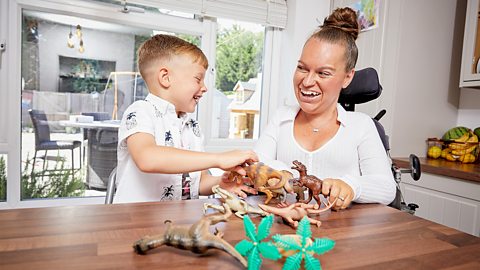
Key behaviours from 0-5 years old
From 0-12 months, we encourage parents to:
- Get face to face with their baby
- Have mini conversations with their baby – waiting for them to respond to interactions with noises/gestures
- Respond to their baby’s babble
- Tune into their baby’s interests and talk about them
From 1-2 years, we encourage parents to:
From 2-5 years, we encourage parents to:
- Recast toddlers’ sentences – repeating their phrases back correctly
- Decontextualise language – talking in past and future tenses with their child
- Explore phonetics and rhyme with their child

